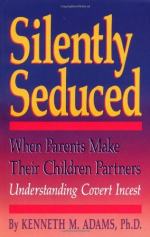|
This section contains 6,209 words (approx. 21 pages at 300 words per page) |

|
SOURCE: “‘Knew shame, and knew desire’: Ambivalence as Structure in Mary Shelley's Mathilda,” in Iconoclastic Departures: Mary Shelley after Frankenstein, edited by Syndy M. Conger, Frederick S. Frank, and Gregory O'Dea, Associated University Presses, 1997, pp. 115-29.
In the following essay, Himes explains that while incest was a conventional theme of nineteeth-century literature, Mary Shelley treats this theme very differently in Mathilda by presenting Mathilda's desire as especially transgressive.
“Such is my name, and such my tale, Confessor—to thy secret ear, I breathe the sorrows I bewail, And thank thee for the generous tear This glazing eye could never shed.”
—Lord Byron, “The Giaour” (1813)
Mathilda is an arresting, riveting work, strange in its representation of incestuous love yet believable in its evocation of forbidden desire. The tightly confined internal and external spaces of and around the title character, who is the scriptor of this confessional work, force the...
|
This section contains 6,209 words (approx. 21 pages at 300 words per page) |

|


